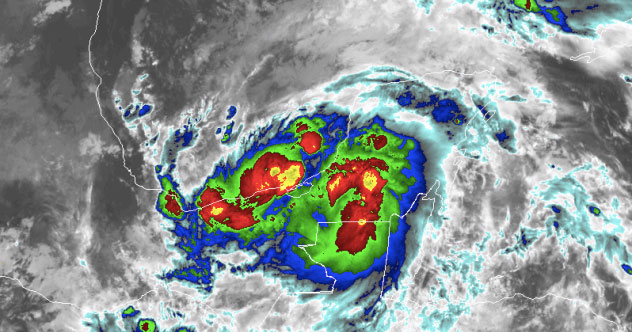Increasing forecast slightly, CSU researchers predict very active 2020 Atlantic hurricane season
(2020-06-04) -- written by Phil Klotzbach
Colorado State University hurricane researchers have increased their forecast slightly and now call for a very active Atlantic hurricane season in 2020, citing the likely absence of El Niño as a primary factor. Sea surface temperatures averaged across portions of the tropical Atlantic are somewhat above normal, while the subtropical Atlantic is much warmer than average. This type of sea surface temperature configuration is also considered favorable for an active 2020 Atlantic hurricane season.
Note to reporters: You can get the PDF directly.

The tropical eastern and central Pacific currently has cool neutral ENSO conditions; that is, the water temperatures are slightly below average. CSU anticipates that these waters will continue to cool relative to their long-term averages over the next several months, potentially reaching weak La Niña conditions by the peak of the Atlantic hurricane season. Consequently, they believe that El Niño is extremely unlikely this year. El Niño tends to increase upper-level westerly winds across the Caribbean into the tropical Atlantic, tearing apart hurricanes as they try to form.
The Caribbean and central tropical Atlantic are somewhat warmer than normal. Warmer-than-normal sea surface temperatures provide more fuel for tropical cyclone formation and intensification. They are also associated with a more unstable atmosphere as well as moister air, both of which favor organized thunderstorm activity that is necessary for hurricane development.
19 named storms
The CSU Tropical Meteorology Project team is predicting 19 named storms in 2020, including the three named storms that have already formed (Arthur, Bertha and Cristobal). Of those, researchers expect nine to become hurricanes and four to reach major hurricane strength (Saffir/Simpson category 3-4-5) with sustained winds of 111 miles per hour or greater. This is a slight increase from the early April prediction of 16 named storms, 8 hurricanes and 4 major hurricanes.
The team bases its forecasts on a statistical model, as well as two new models that use a combination of statistical information and forecasts from dynamical models from the UK Met Office and the European Centre for Medium-Range Weather Forecasts. These models are built on 25-40 years of historical hurricane seasons and evaluate conditions including: Atlantic sea surface temperatures, sea level pressures, vertical wind shear levels (the change in wind direction and speed with height in the atmosphere), El Niño (warming of waters in the central and eastern tropical Pacific), and other factors.
So far, the 2020 hurricane season is exhibiting characteristics similar to 1995, 2003, 2008, 2011, 2013 and 2016. “Five of these six seasons had above-average Atlantic hurricane activity, while 2013 was an extremely quiet season,” said Phil Klotzbach, research scientist in the Department of Atmospheric Science and lead author of the report.
The team predicts that 2020 hurricane activity will be about 150 percent of the average season. By comparison, 2019’s hurricane activity was about 120 percent of the average season. The 2019 season was most notable for Hurricane Dorian, which devastated the northwestern Bahamas, and for Tropical Storm Imelda, which caused tremendous flooding in portions of southeast Texas.
The CSU team will issue forecast updates on July 7 and August 6.
This is the 37th year that the CSU hurricane research team has issued an Atlantic basin seasonal hurricane forecast. Recently, the Tropical Meteorology Project team has expanded to include Michael Bell, associate professor in the CSU Department of Atmospheric Science, and Jhordanne Jones, graduate research assistant in the same department. Bill Gray, who originated the seasonal forecasts, launched the report in 1984 and continued to author them until his death in 2016.
The CSU forecast is intended to provide a best estimate of activity in the Atlantic during the upcoming season – not an exact measure.
As always, the researchers caution coastal residents to take proper precautions.
“It takes only one storm near you to make this an active season,” Bell said.